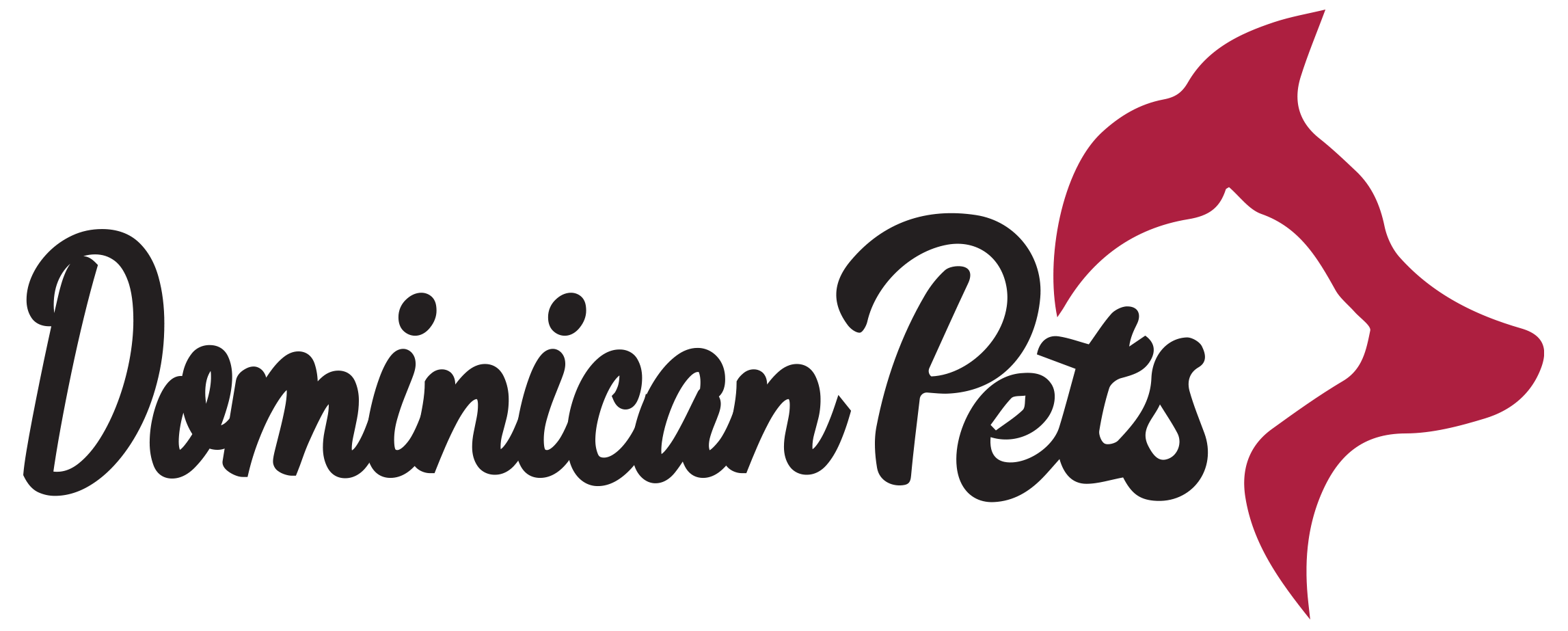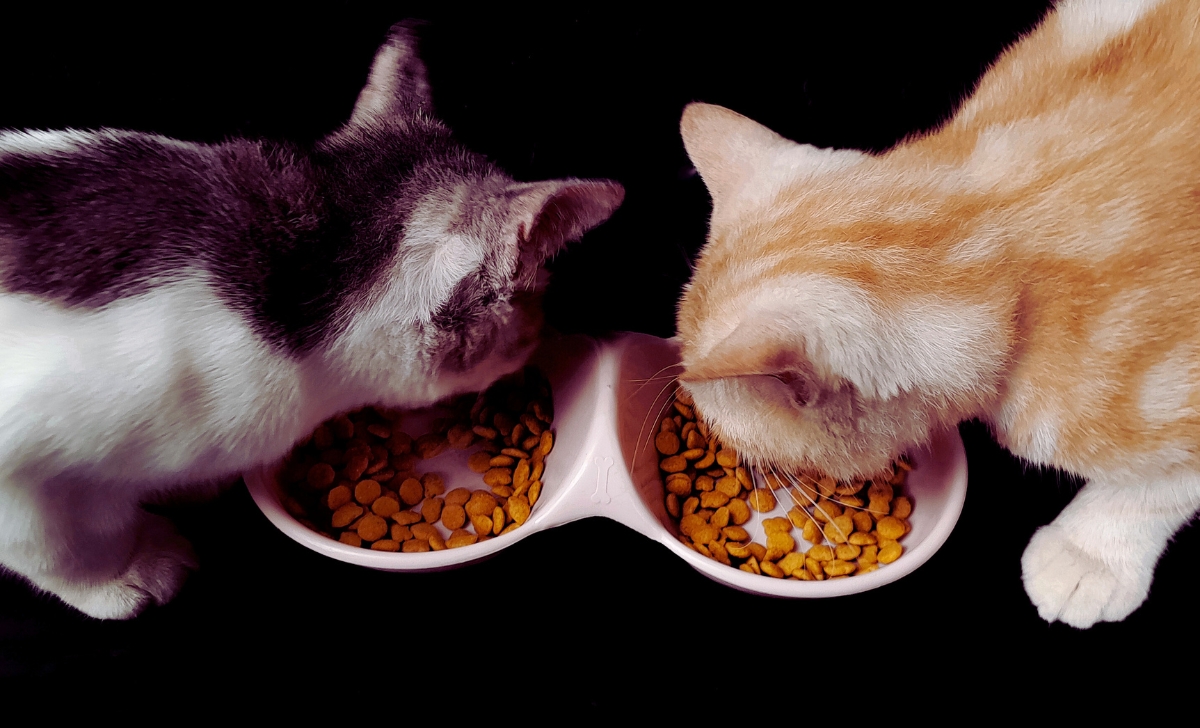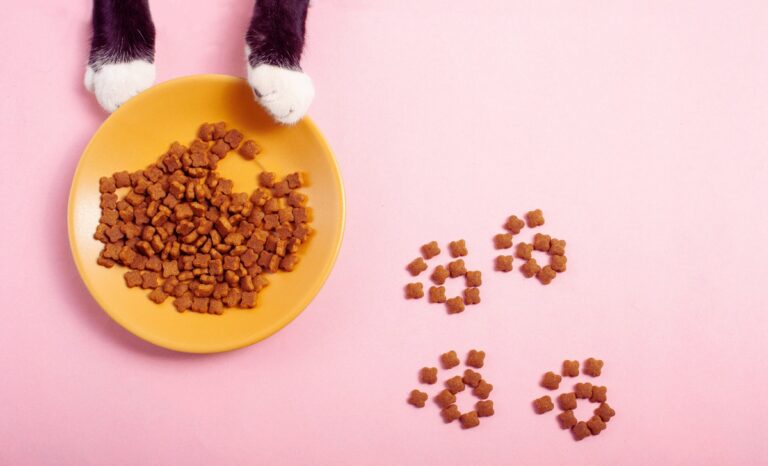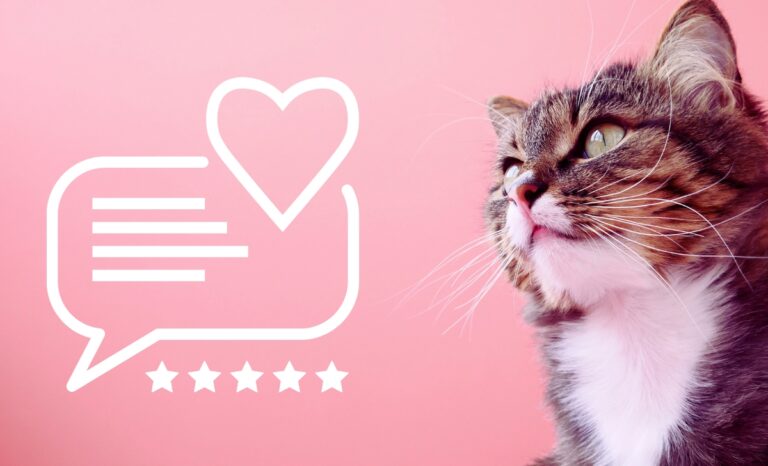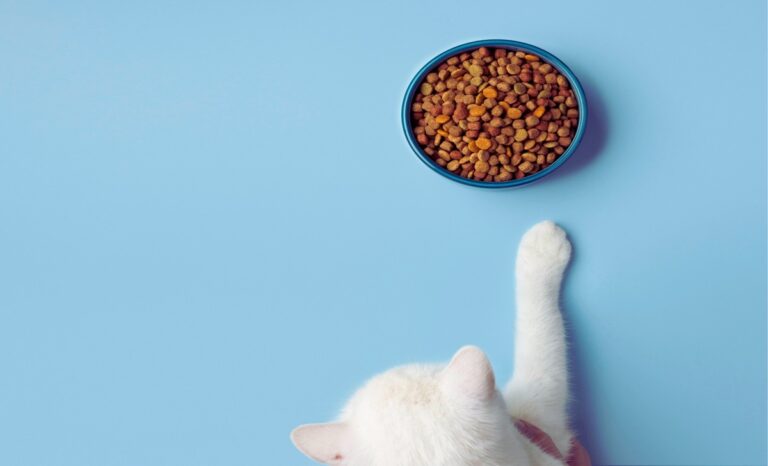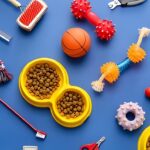Feeding your cats the right meals daily is one of the most crucial responsibilities as a pet owner. Cats, just like any other living being, require a balanced and nutritious diet to maintain a healthy life. If you are the proud owner of two cats, you may find yourself juggling their nutritional needs, personalities, and food preferences. Crafting two cat daily meal plans tailored to their unique requirements can be challenging but rewarding. By focusing on a well-rounded diet and incorporating their specific preferences, you can ensure both cats stay happy, healthy, and energized.
Table of Contents
ToggleThis comprehensive guide will walk you through the importance of a structured tow cat daily meal plans, what to consider when creating meal plans for two cats and offer two complete meal plan templates to get you started. Additionally, we will discuss common mistakes to avoid, how to meal prep efficiently, and how to ensure hydration, among other key tips for the well-being of your cats.
Two Cat Daily Meal Plans Matter
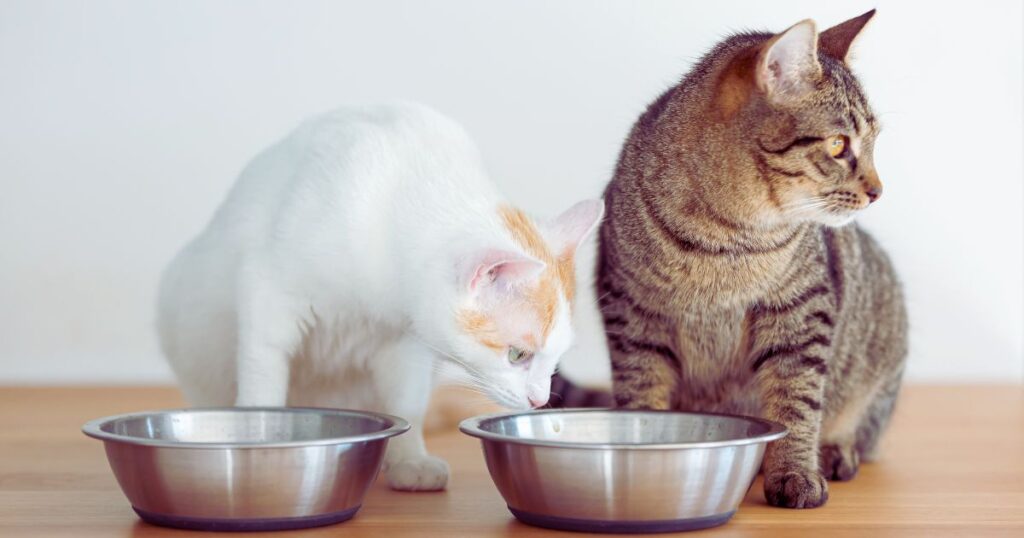
A structured two cat daily meal plans is essential for any cat’s overall health. Cats, being obligatory carnivores, rely heavily on a diet rich in animal proteins, fats, and essential micronutrients. Providing the right food at the right time can dramatically improve your cat’s physical and mental well-being. Two Cat Daily Meal Plans can offer a practical example of how diversifying meals across the day supports these dietary needs effectively. Each plan is designed to cater to the unique nutritional requirements of your cat, ensuring they receive the perfect balance of protein, fats, and essential nutrients in every meal. This not only boosts their health but also enhances their overall happiness and vitality.
Health Benefits:
Balanced Diet: A balanced diet ensures that your cats get all the nutrients they need to function properly. Whether it is protein for muscle maintenance or vitamins for skin health, each component of their diet plays a vital role in supporting their bodily functions.
Prevention of Diseases: By feeding your cats a balanced, nutritious diet, you help prevent many common cat diseases. For example, feeding your cat the right number of calories and nutrients can help prevent obesity, diabetes, kidney disease, and heart conditions. A meal plan ensures they get the proper nutrients they need without excessive fats or sugars that could lead to obesity and diabetes.
Behavioral Benefits:
Mood Regulation: Just like humans, cats are deeply affected by their diet. When fed properly, cats tend to have more stable behavior, exhibit less food-related anxiety or aggression, and are overall more relaxed. A cat that gets the proper nutrition will have a better energy level and can engage in activities, reducing undesirable behavior caused by hunger or fatigue.
Reduced Anxiety: A consistent feeding routine gives your cats a sense of security, as they know they will be fed regularly and on time. Regular meals help reduce anxiety and stress, leading to a happier, more balanced cat.
Long-Term Health:
Proper meal planning is an investment in your cats’ long-term health. By preventing common health issues related to diet and providing the right nutrients through Two Cat Daily Meal Plans, you are ensuring that your cats live longer, healthier lives. A strong, well-maintained diet supports immune system function, cognitive health, and overall vitality, which is critical as they age. These tailored meal plans cater to individual nutritional needs, promoting a well-rounded approach to feline wellness.
Understanding Your Cats' Nutritional Needs
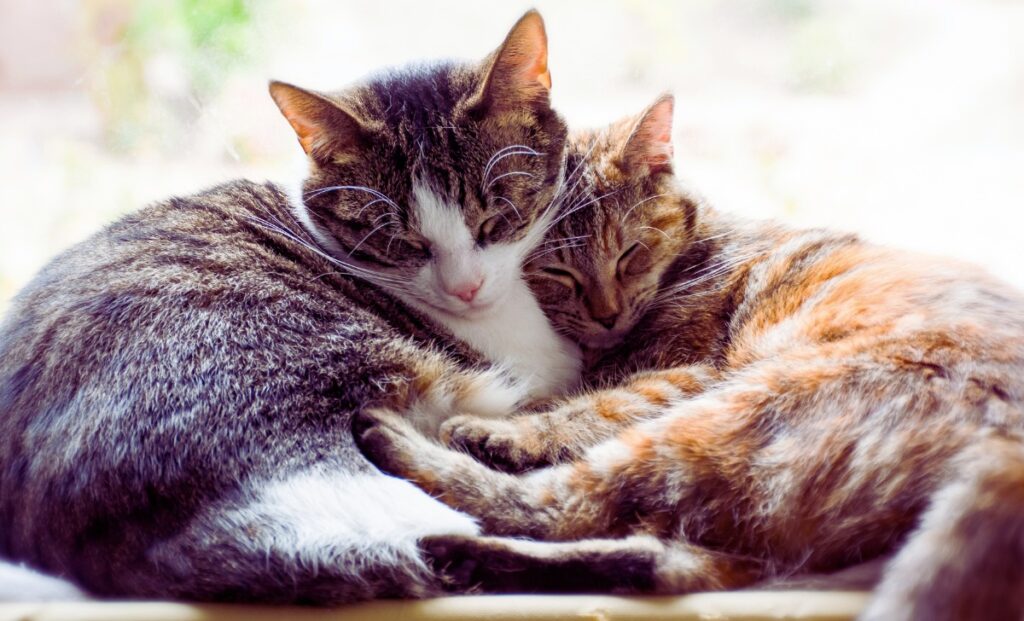
Macronutrients
Protein: Cats are obligatory carnivores, meaning they rely on animal-based proteins to thrive. Unlike humans or other animals, they cannot synthesize certain essential amino acids and must obtain them from their food. Protein plays a crucial role in growth, muscle repair, energy production, and immune function. The ideal protein sources for cats include chicken, beef, turkey, and fish, which can be included in various feeding routines. For example, Two Cat Daily Meal Plans can be designed to incorporate these high-quality protein options, ensuring your feline companions receive the nutrients they need for a healthy, active life.
Fat: Fat is a vital source of energy for cats and plays a crucial role in maintaining healthy skin, fur, and internal organs. Omega-3 and Omega-6 fatty acids are essential for reducing inflammation and supporting cognitive function. Fat also aids in the absorption of fat-soluble vitamins such as vitamins A, D, E, and K.
Carbohydrates: While cats do not need carbohydrates to survive, a small amount in their diet can provide energy. Carbs can help regulate blood sugar levels and provide fiber, but too many carbohydrates can lead to weight gain and digestive issues. High-quality foods should contain minimal carbs, focusing instead on animal protein and fat.
Micronutrients
Vitamins: Cats need vitamins like Vitamin A (eye health), Vitamin D (bone health), and B Vitamins (energy metabolism) for proper functioning. These vitamins are often included in high-quality cat food commercials to ensure your cats receive a balanced intake.
Minerals: Cats require minerals like calcium, phosphorus, and magnesium for bone health, organ function, and metabolic processes. Too many minerals, like phosphorus, can be harmful, especially for senior cats with kidney issues.
Water: Water is one of the most crucial elements in a cat’s diet, especially since cats are often not keen on drinking water. Cats who eat mostly dry food are prone to dehydration, which can lead to urinary tract infections, kidney disease, and other health problems. To prevent this, it’s essential to follow balanced Two Cat Daily Meal Plans that include wet food or ensure a constant supply of fresh water. This approach helps to keep your cats hydrated and supports their overall health, promoting a long and happy life.
Two Cat Daily Meal Plans: Tailoring for Different Lifestyles
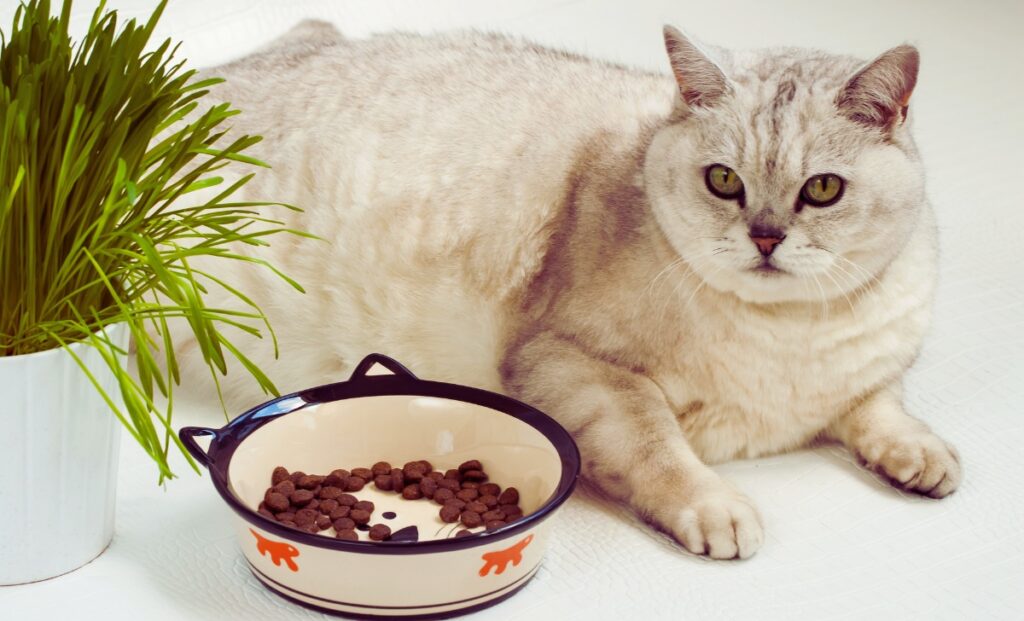
Active Cats
Active cats, especially kittens, young cats, or outdoor cats, require more calories to maintain their high energy levels. To meet these needs, Two Cat Daily Meal Plans should include a higher amount of protein and fat to fuel their muscles and activity. A high-calorie, high-protein diet will ensure they have the energy necessary to play, explore, and remain active throughout the day.
Example Meal Plan for Active Cats:
- Breakfast: High-protein wet food (chicken, turkey, or tuna) with added fat sources such as salmon oil.
- Midday Snack: Freeze-dried meats or small portions of cooked chicken or turkey.
- Dinner: Protein-based wet food, possibly with added vegetables like pumpkin for digestion.
Less Active Cats
Indoor cats, senior cats, or those who are more sedentary may require fewer calories to maintain a healthy weight. With the right balance, a properly structured Two Cat Daily Meal Plans can help ensure that your cats receive the right amount of nutrition. These cats can be prone to obesity, so controlling calorie intake is key. Focus on lean protein, higher fiber content, and fewer fats to prevent weight gain, all while offering them meals that keep them satisfied and healthy.
Example Meal Plan for Less Active Cats:
- Breakfast: Lean meat-based wet food with added fiber such as pumpkin or peas.
- Midday Snack: Lesser amounts of vegetables or a small treat like boiled chicken.
- Dinner: Low-fat, high-protein wet food with additional vegetables.
Senior Cats
Example Meal Plan for Senior Cats:
- Breakfast: Easy-to-digest, high-protein wet food (e.g., chicken or turkey).
- Midday Snack: Lesser amounts of cooked, soft foods like boiled chicken or fish.
- Dinner: A nutrient-dense wet food with added joint support and fewer phosphorus levels.
Special Health Needs
Some cats may have specific health conditions that require special dietary considerations. Cats with diabetes, kidney disease, or food allergies may require special veterinary-recommended foods.
Example Meal Plan for Cats with Special Health Needs:
- Diabetic Cats: Low-carb, high-protein foods (e.g., high-quality wet food with minimal grains and vegetables).
- Cats with Kidney Disease: Special kidney-preserving diets that are lower in protein and phosphorus.
Two Cat Daily Meal Plans 01 - Morning & Evening Routine
Morning Meal
The morning meal should be the largest, providing your cats with the energy they need to start their day. Wet food is an excellent option for this, as it helps with hydration, which is crucial for maintaining urinary tract and kidney health. When planning Two Cat Daily Meal Plans, consider incorporating a mix of wet food in the morning and high-protein options like dry kibble or cooked chicken later in the day to support overall health and energy levels.
Sample Morning Meal:
- Chicken-based wet food with added fish oil for healthy fats.
- Additional protein like beef or turkey for variety.
Benefits:
Starting the day with protein helps provide steady energy throughout the day, aiding in muscle repair and growth. Two Cat Daily Meal Plans can include a mix of dry kibble, wet food, and protein-rich options like cooked chicken or fish, ensuring balanced nutrition. Wet food also boosts hydration, which is particularly beneficial for cats that don’t drink enough water, supporting overall health and well-being.
Evening Meal
The evening meal should be lighter to allow for proper digestion before bedtime. While still protein-heavy, this meal can be smaller in portion size to ensure your cats do not feel sluggish during the night.
Sample Evening Meal:
- Lean fish or turkey-based wet food with fiber-rich ingredients like pumpkin or peas.
- Small portion of cooked vegetables.
Benefits:
A lighter evening meal prevents weight gain and supports overnight digestion. The fiber helps regulate bowel movements and keeps your cat’s digestive system healthy.
Two Cat Daily Meal Plans 02 - Split Meals with Snacks Between
Another option for managing Two Cat Daily Meal Plans is to split meals into smaller portions throughout the day, offering two or three small meals alongside healthy snacks. This approach ensures your cats stay energized and receive essential nutrients consistently throughout the day, promoting their overall health and well-being.
Breakfast
Start with a nutrient-dense, high-protein meal to jumpstart the day. This meal should include animal-based protein like chicken, turkey, or beef, with added fats for energy.
Sample Breakfast:
- Wet food with chicken, turkey, or salmon as the main ingredient, combined with a small portion of dry food.
Midday Snack
Provide a healthy snack in the afternoon to curb hunger and provide additional nutrients. Ideal snacks include small portions of freeze-dried meat or cooked chicken.
Dinner
End the day with a lighter meal that includes lean proteins, vegetables, and fiber to help digestion and prevent overeating before bed.
Sample Dinner:
- Wet food with fish or lean meat, plus a small serving of vegetables for fiber.
Additional Meal Plan Variations
For Picky Eaters
If your cats are fussy eaters, it is essential to offer a variety of flavors and textures. You can try different proteins or mix wet and dry food to create interest in their meals.
For Cats with Sensitive Stomachs
Cats with sensitive stomachs benefit from bland, easily digestible foods. Chicken, turkey, and rice-based diets are often ideal for these cats. You may also want to incorporate supplements like probiotics to aid in digestion.
How to Meal Prep for Two Cats
Meal prepping is a wonderful way to save time while ensuring your cats receive balanced meals daily. Here are some tips for efficient meal prepping:
Batch Cooking
Prepare proteins like chicken, turkey, and fish in large batches. Cook, portion, and freeze them in small, meal-sized containers to maintain freshness. You can also batch-cook vegetables for added fiber.
Portion Control
Measure the food portions using a kitchen scale to ensure each cat is receiving the right number of calories. This will prevent overfeeding or underfeeding, which can lead to health problems.
Storage Tips
Store dry food in airtight containers to maintain its crispness and prevent spoilage. Wet food should be refrigerated once opened and used within a few days. Use high-quality bags or containers to prevent food from becoming stale.
Ensuring Hydration
As mentioned earlier, hydration is vital for your cats’ health. Many cats do not drink enough water, so incorporating wet food into their diet is an essential part of Two Cat Daily Meal Plans to boost hydration. Additionally, placing water bowls in multiple locations or using a pet fountain can encourage your cats to drink more and maintain proper hydration levels.
Conclusion
Creating Two Cat Daily Meal Plans may seem challenging, but it is essential for their health and happiness. By understanding each cat’s unique nutritional needs, considering factors like age, activity level, and health status, and incorporating variety and balance into their meals, you can ensure they receive the best care. Whether you use one of the suggested plans or customize your own, consistency and portion control remain key to keeping your cats healthy and thriving.
FAQs
1. How many meals should I feed my cats?
Answer: Generally, two meals a day are ideal for adult cats—one in the morning and one in the evening. Active or younger cats may need more frequent meals.
2. Can I feed both cats the same food?
Answer: It depends on their individual needs. If they are similar in age and activity level, they can share the same food, but adjustments may be required if one has special dietary needs.
3. What if my cats are fussy eaters?
Answer: Try rotating different protein sources and textures, and offer smaller, more frequent meals. If problems persist, consult your vet.
4. How can I prevent my cats from overeating?
Answer: Measure their food, avoid free feeding, and separate their feeding areas. Adjust portions based on their weight and activity level.
5. Should I feed wet or dry food?
Answer: A combination of both is ideal. Wet food offers hydration, while dry food can help with dental health. Just make sure your cats drink enough water if they eat mostly dry food.
